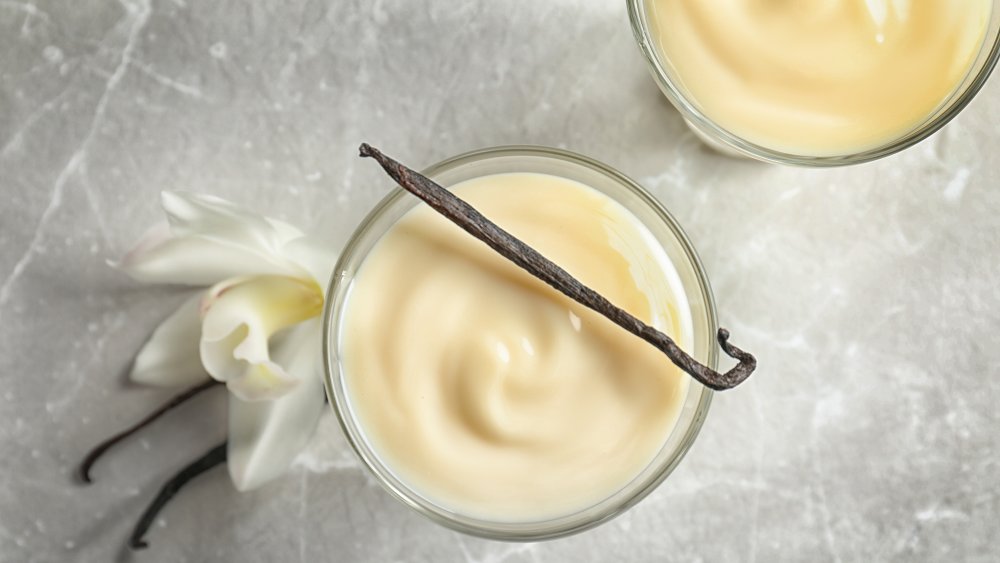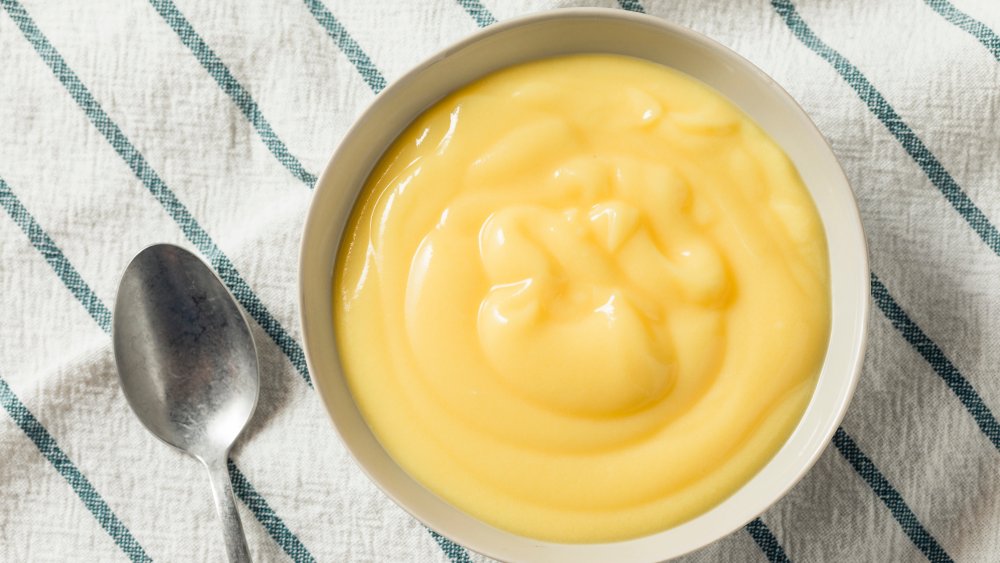The Real Difference Between Custard And Pudding
There's something so comforting about dipping your spoon into a smooth custard or pudding and enjoying a creamy mouthful. But if you've ever wondered what the difference is between the two sweet treats, you might have had difficulty determining what sets them apart from one another. Both can be eaten on their own or used in other desserts, like trifles. Both have a similar if somewhat different texture. Lastly, both can be made in different flavors, even if vanilla and chocolate are probably the most common.
Real pudding, not the easy yet delicious powdered mixes, is made on the stovetop. It's typically a milk- or cream-based dessert that's sweetened and thickens as it cooks thanks to the use of a thickening agent. This could be gelatinized starch, but cornstarch or flour is commonly used too (via Taste of Home). As the pudding cooks, the thickening agent is what helps the dessert form its semi-solid consistency and smooth, creamy texture (via Calorie Control).
It's all about how the dessert thickens
It turns out the thickening agent in pudding is the key difference between custard and pudding. Custard is made of eggs, sugar, and milk. It's usually baked or can be stirred over low heat to cook. But custard doesn't use any thickening agent and solely relies on the eggs in the dessert to help it set, which differentiates it from pudding. According to Taste of Home, it's the egg's yolk that tends to be the ingredient in the custard that really acts as the binding agent in the dessert too.
Even without any additional thickening agent, custard tends to be firmer than pudding. Its texture is silky yet has a bit of jiggle to it after it cools, too, according to Calorie Control. The firmness of this smooth and creamy dessert makes it a bit more substantial, so it holds up well in the desserts in which it is used. Whichever you prefer, however, these very similar desserts are almost interchangeable. Just keep in mind the main difference comes down to how each thickens.

